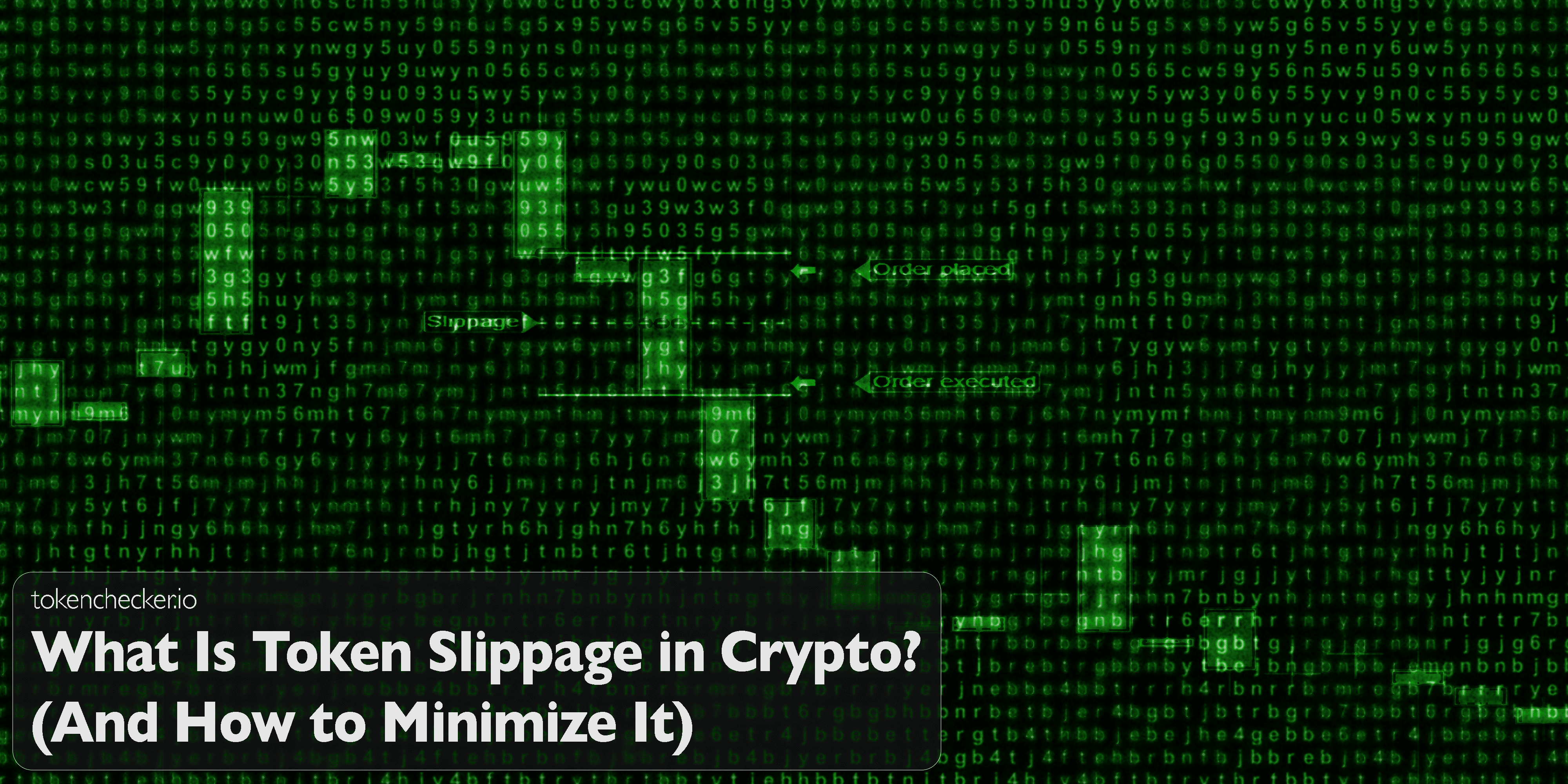
What Is Token Slippage in Crypto? (And How to Minimize It)
Slippage happens when you expect one price but get another. In crypto, this can mean the difference between a profitable trade and an unexpected loss—especially when you're moving fast in a volatile market. It’s one of the most misunderstood risks for new traders, and yet it affects nearly every transaction, especially on decentralized exchanges.
This glossary breakdown explains what slippage really is, why it happens, and how to protect yourself from it. Whether you're swapping tokens on Uniswap or making a big trade on a centralized exchange, understanding slippage is non-negotiable.
What Is Token Slippage?
Token slippage is the difference between the price you see when placing a trade and the price you actually get once the trade executes. It happens because crypto markets move fast—prices can change between the time you hit “swap” and the time the transaction is confirmed.
Example: You want to buy a token at $1.00, but by the time the transaction processes, the price has jumped to $1.03. That 3% difference is slippage.
Slippage can be positive (you get a better price) or negative (you get a worse one). Most people only notice it when it costs them money.
What Causes Slippage?
Several factors can make slippage worse:
- Volatility: Prices in crypto can swing wildly in seconds, especially during news events or token launches.
- Low Liquidity: If there aren’t many buyers or sellers, even small trades can shift the price. Understanding liquidity is key to avoiding high slippage.
- Large Trade Sizes: Big orders consume liquidity at multiple price points, pushing prices up or down.
- Network Congestion: On DEXs, your transaction can get stuck while prices keep moving.
- AMM Mechanics: On platforms like Uniswap, the algorithm rebalances token ratios, which changes the price with every trade.
Where Slippage Happens
- CEXs (Centralized Exchanges): Slippage happens when your order gets filled across multiple price levels in a thin order book.
- DEXs (Decentralized Exchanges): Slippage is caused by liquidity pool imbalance and AMM logic. Your trade changes the ratio, which changes the price.
Both models are vulnerable—but DEXs are especially sensitive to slippage during periods of low liquidity or high gas fees.
How Slippage Affects You
- You pay more than expected on buys
- You get less than expected on sells
- Small trades become more expensive
- Big trades become risky
- Frequent trading? Slippage quietly drains profits over time
For high-frequency traders and bots, even 1% slippage can ruin a strategy.
How to Minimize Slippage
1. Use Limit Orders
If you're on a CEX, use a limit order to lock in your price. Market orders are faster but riskier in volatile markets.
2. Set a Slippage Tolerance
On DEXs, you can set a “slippage tolerance”—the max % you’re willing to tolerate.
- Tight range (0.1–0.5%) for stable pairs
- Wider range (1–3% or more) for volatile tokens
Too low = failed trade. Too high = front-run risk.
3. Break Up Large Trades
Instead of dropping $50,000 in one swap, split it into smaller chunks. This reduces price impact.
4. Avoid High-Volatility Moments
Stay away from trading right after major news or during token launches when price swings are wild. The period right after a token launch is notoriously volatile.
5. Trade During High Liquidity Hours
Overlap with U.S./EU markets. Look for tight bid-ask spreads or deep liquidity pools.
6. Monitor TVL and Order Book Depth
More liquidity = less price movement = less slippage. Check pool size on DEXs or depth charts on CEXs.
Bonus Strategies
- Use Layer-2 DEXs (like Arbitrum): Faster confirmations = less time for price to move.
- Try OTC Desks for Huge Orders: Avoid moving the market yourself.
- Set Price Alerts: Stay ahead of market swings and trade when the time is right.
Slippage vs. Related Concepts
| Term | What It Is | Key Difference |
|---|---|---|
| Slippage | Price you expect vs. price you get | Caused by market movement or delay |
| Price Impact | How much your trade changes the price | Caused by your trade size |
| Gas Fees | Cost to execute the transaction | A fee, not a price deviation |
| Impermanent Loss | Loss from LP tokens compared to just holding the assets | Happens to liquidity providers, not traders |
Final Thoughts
Slippage isn’t a bug. It’s a feature of fast, dynamic markets. You won’t eliminate it completely—but you can manage it, plan around it, and use smart tools to avoid letting it kill your trades.
Before you swap anything, especially on a low-liquidity pair, ask yourself:
- How much slippage am I okay with?
- How volatile is this pair?
- Am I moving too fast for the market?
tokenchecker.io helps traders monitor liquidity, price trends, and slippage-related risks before executing. With proper planning, you can keep slippage under control and protect your capital—one trade at a time.